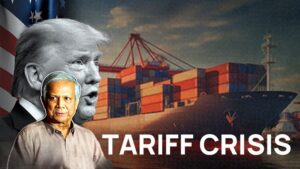In a conversation with Apparel Resources, Abhishek Yugal, Managing Partner, Groyyo Consulting, discussed his views on buyer expectations in terms of the supply chain with regard to the Bangladesh industry.
Business
-
-
Apparel Resources spoke with Bangladeshi industry leaders to ascertain whether the country’s RMG industry is equipped to deal with the changing trade environment in the wake of US tariffs and the strategies they are using to get ahead.
-
With more than 230 LEED-certified green factories, the highest number in the world, Bangladesh is already leading in sustainable apparel manufacturing. This perfectly fits with Mango’s Sustainable Vision 2030.
-
Manufacturing
Denim That’s Both Stylish And Sustainable: Insights from Kamrun Nahar, Lead Denim Designer, Hameem Group
In an exclusive discussion with Apparel Resources, Kamrun Nahar, Lead Denim Designer, Hameem Group talks about how more and more companies in Bangladesh are shifting towards sustainable manufacturing practices such as laser, ozone technolog
-
In a major policy shift, India pulled the plug on a key transshipment facility that once allowed Bangladesh to route export goods to other countries. Bangladesh, even before India’s move, halted yarn imports from India via land ports, cit
-
Sourcing
Ethical sourcing meets unethical buying: Insights from Shah Rayeed Chowdhury, Director, Evince Group
In a candid conversation with Apparel Resources, Shah Rayeed Chowdhury, Director, Evince Group discusses about the relevance of both ethical sourcing and ethical buying and how a sustainable industry cannot be built on ethical sourcing alon
-
Lululemon collaborates with 49 vendors worldwide, with 8 per cent of its products manufactured in Bangladesh. This presents a significant opportunity for the country to expand its role in the supply chain.
-
In an exclusive discussion with Apparel Resources, Azeezur Rahman Khan, Country Development Representative for The Woolmark Company in Bangladesh and GM-Thianis Apparels, discusses about the cost dynamics of sustainable production, the grow
-
Manufacturing
What can Bangladesh’s RMG sector learn from Vietnam? : Insights from Akib Rahman, Director, HAMS Group
Akib Rahman, Director, HAMS Group gets candid with Apparel Resources and talks about what learnings Bangladesh should take from Vietnam’s textile industry, including production efficiency, R&D investment, FTAs, product diversification, st






